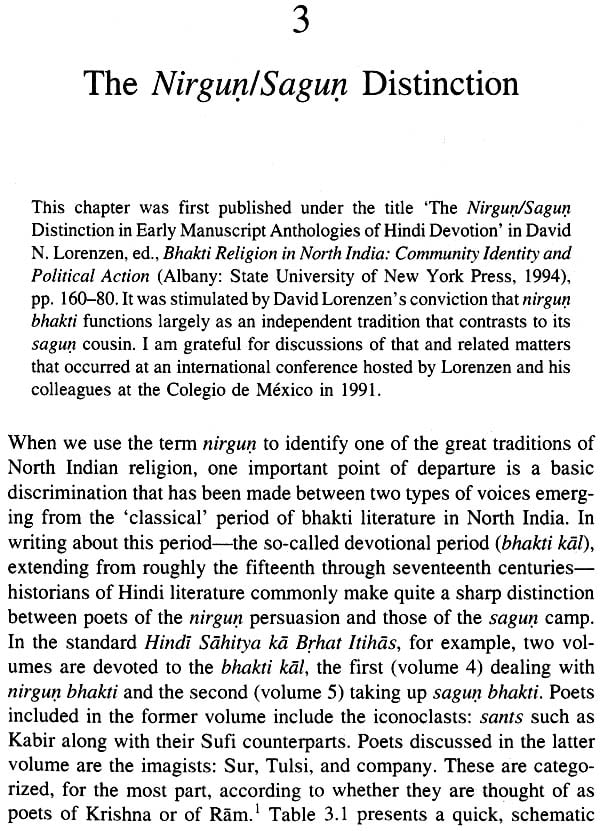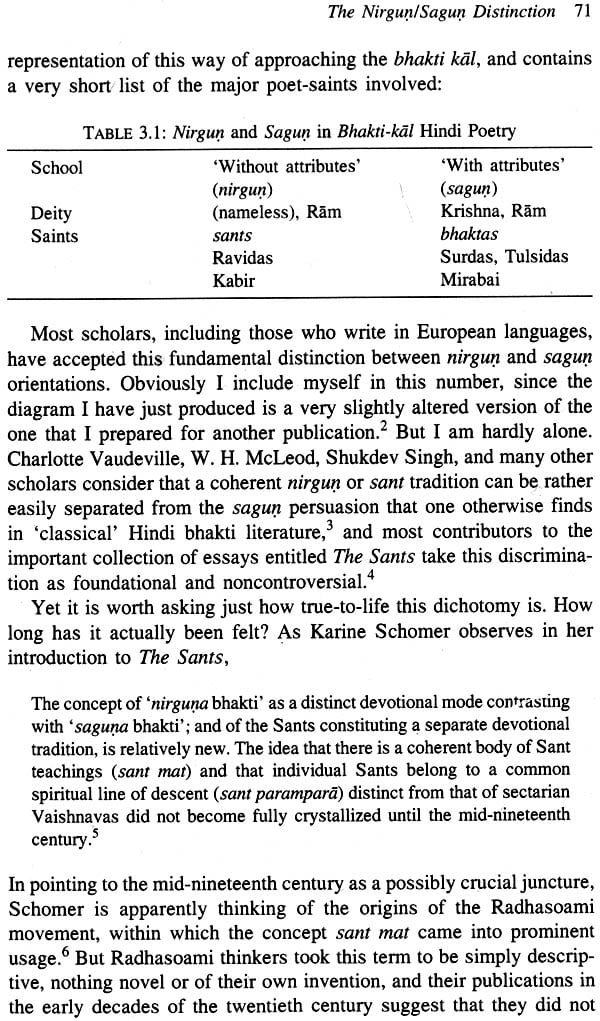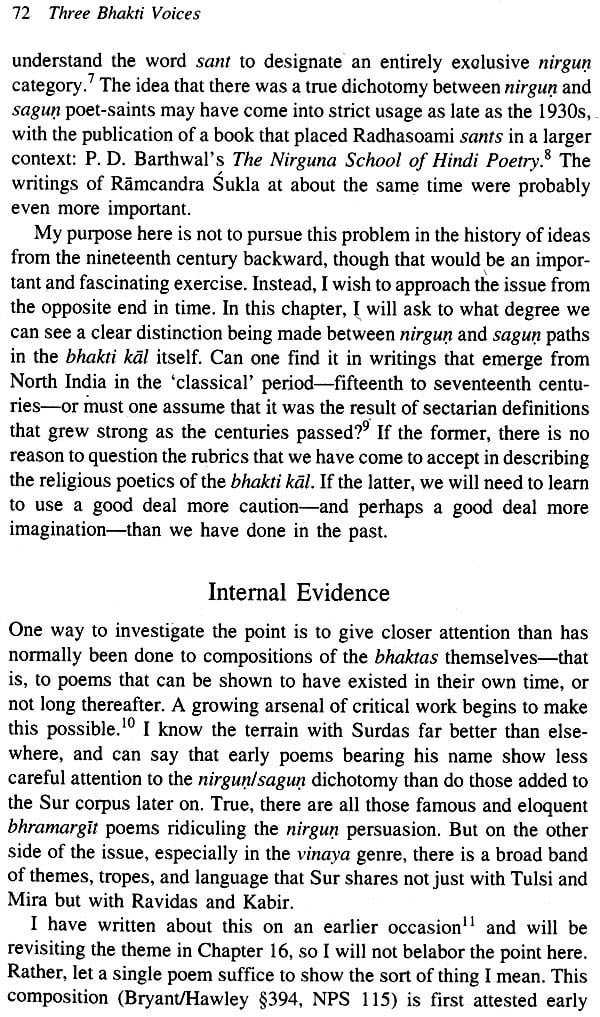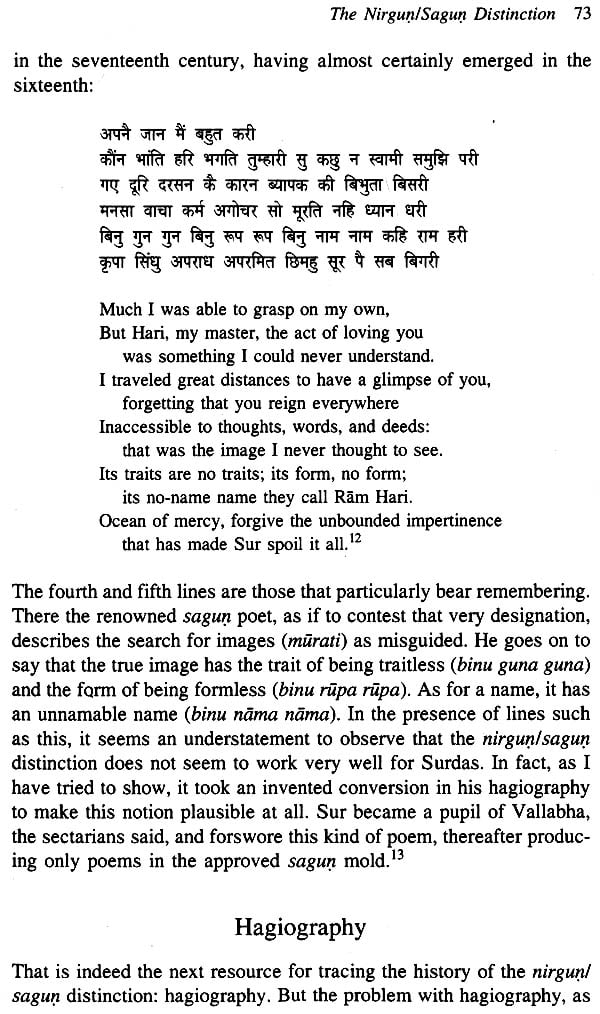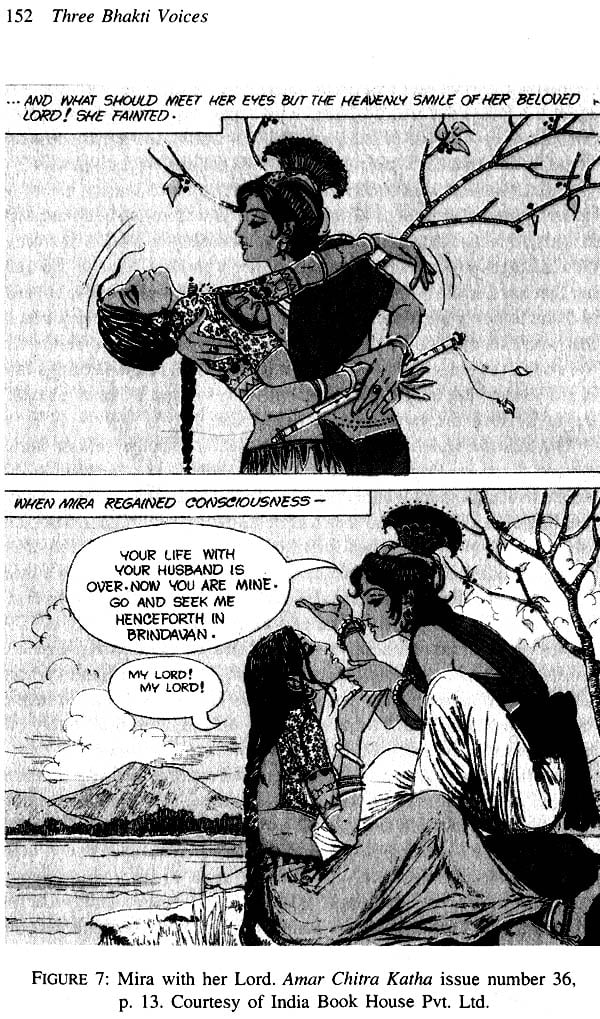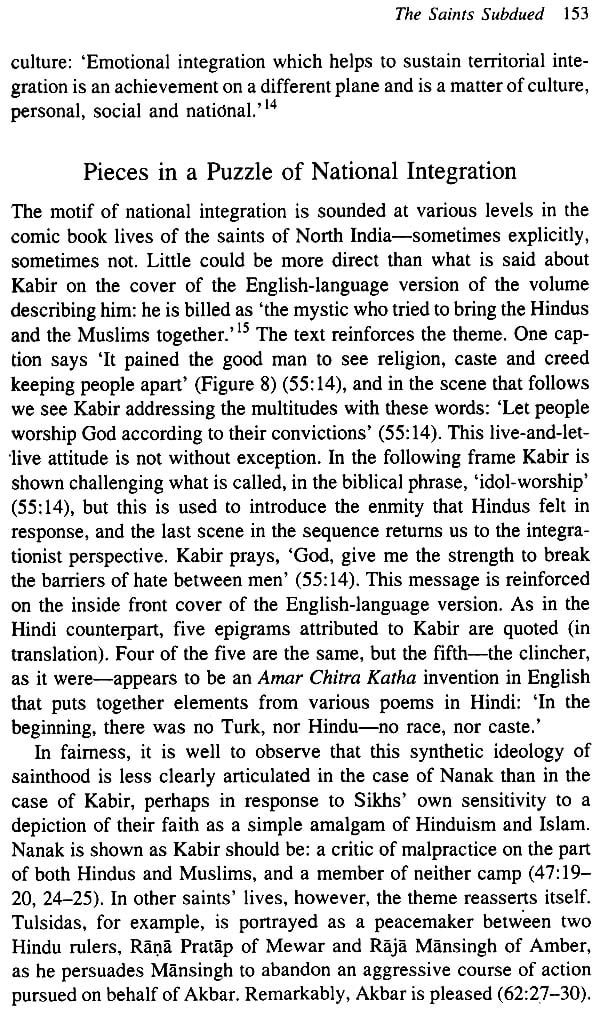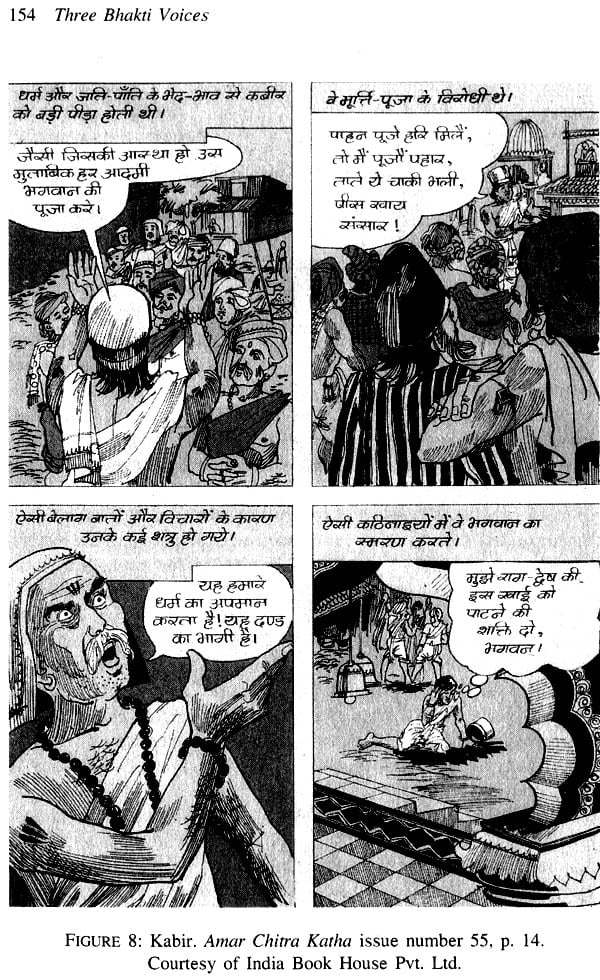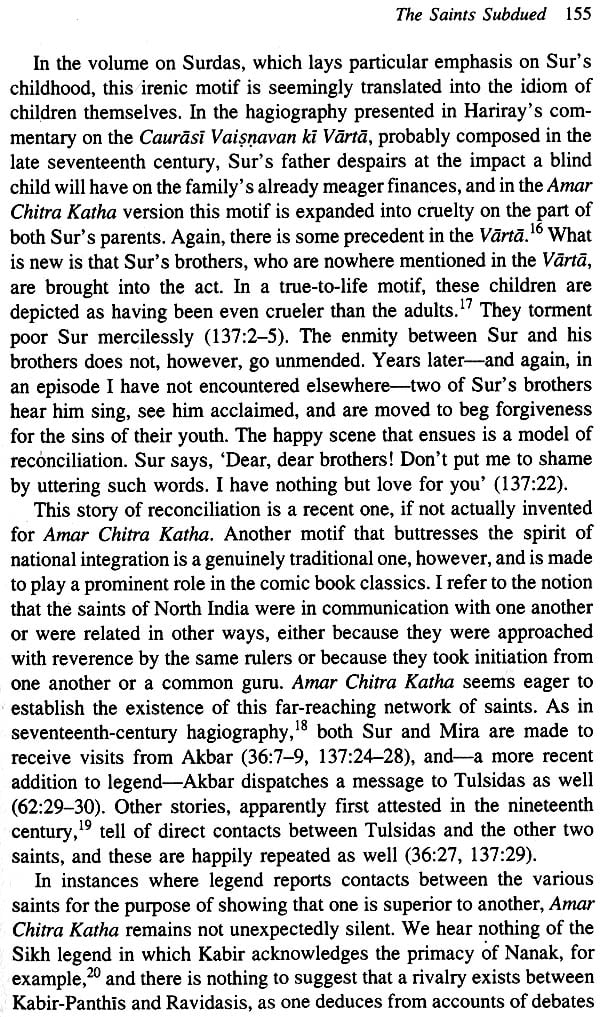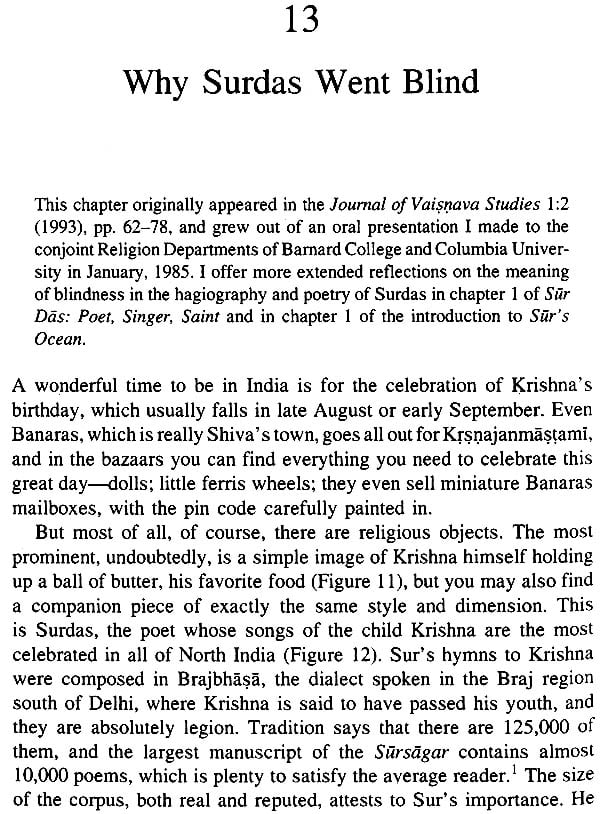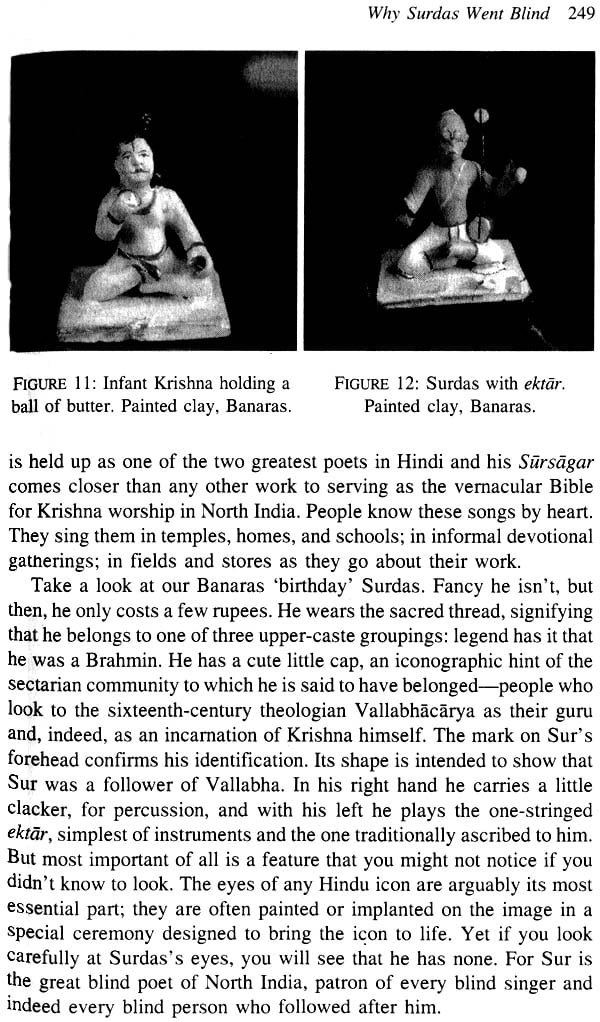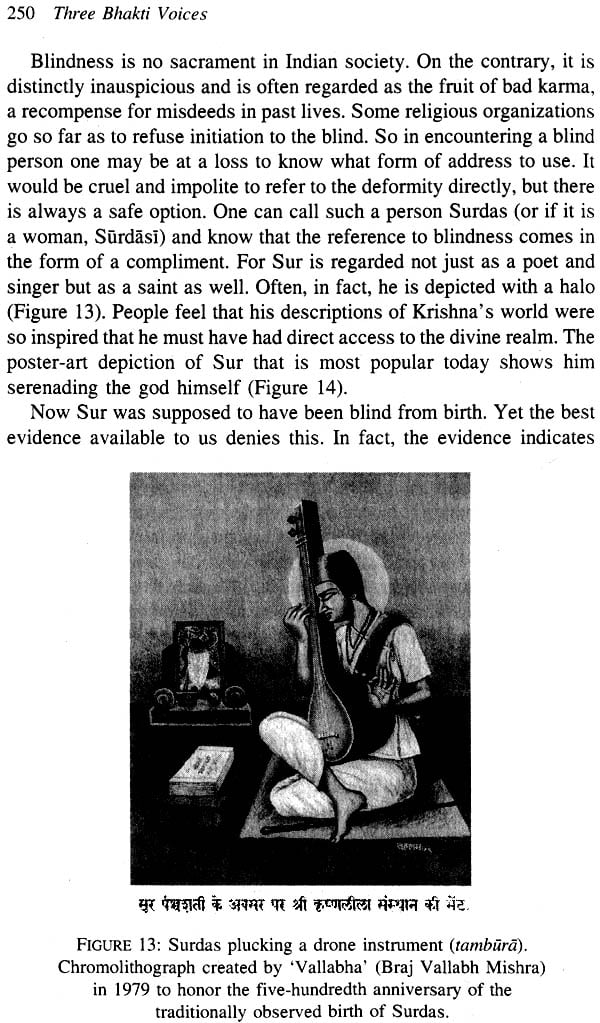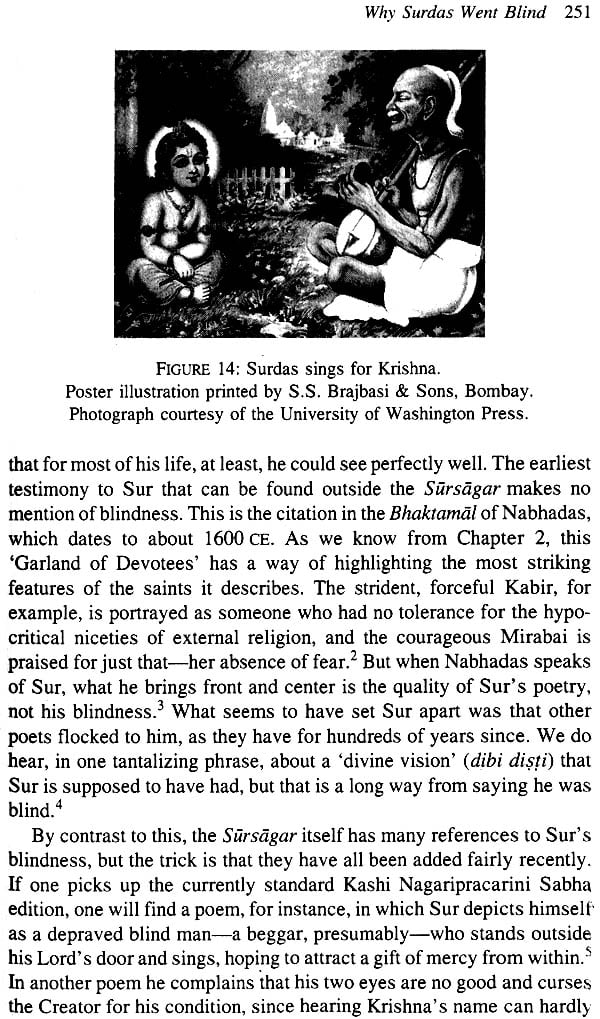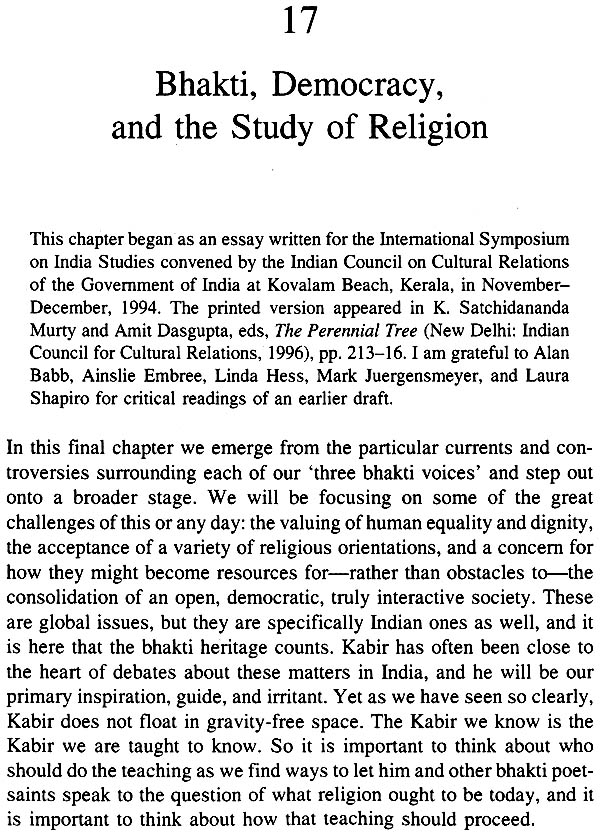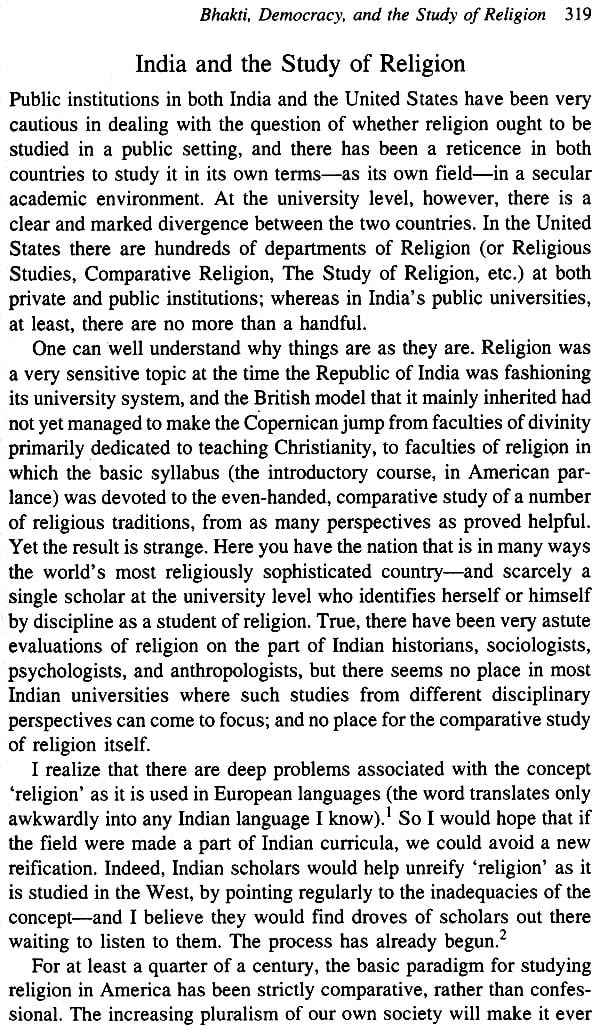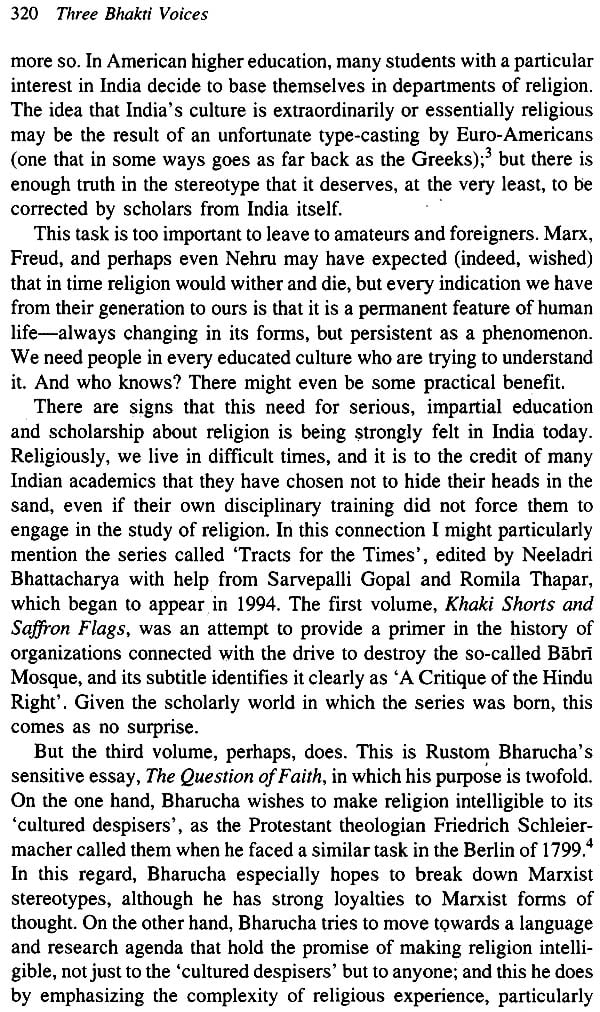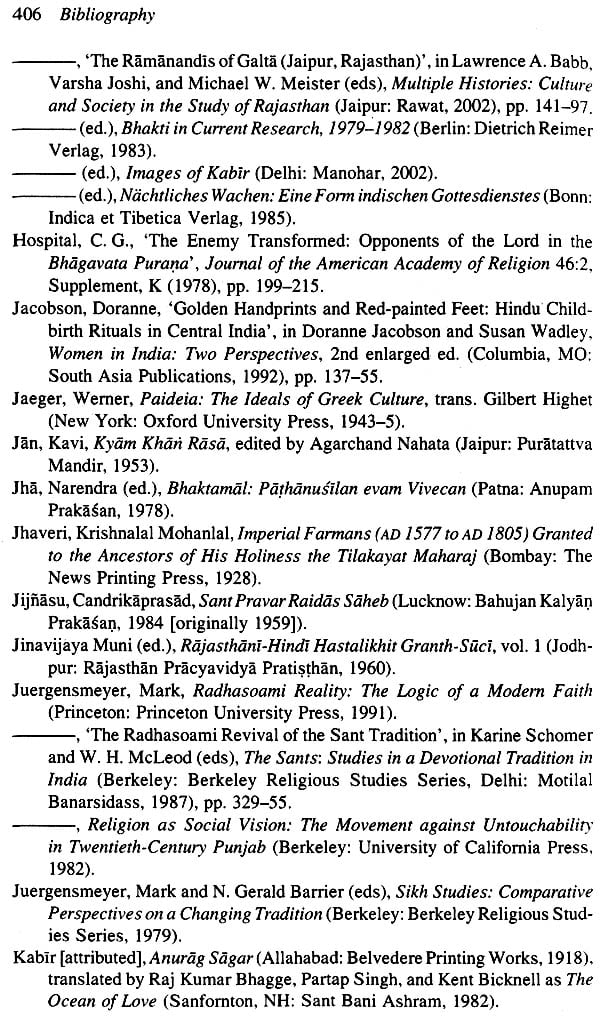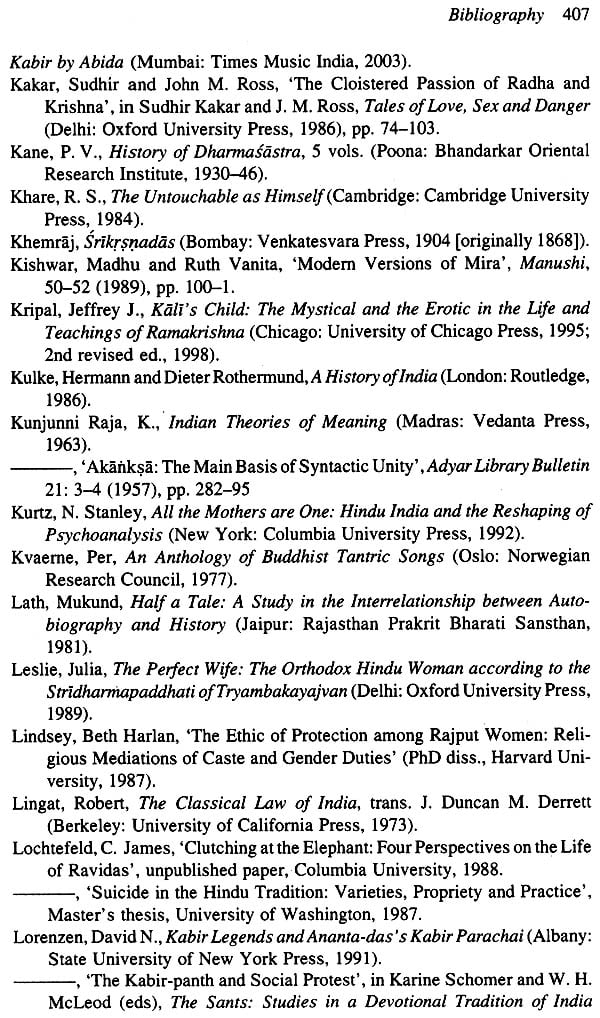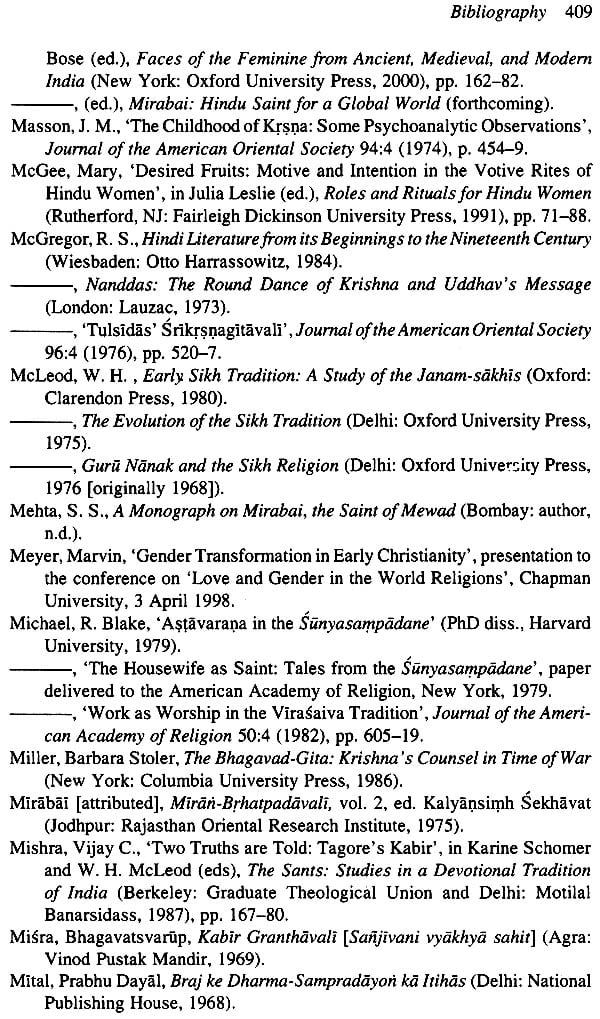
Three Bhakti Voices (Mirabai, Surdas, and Kabir in Their Time and Ours)
Book Specification
| Item Code: | IDE125 |
| Author: | John Stratton Hawley |
| Publisher: | Oxford University Press, New Delhi |
| Language: | English |
| Edition: | 2012 |
| ISBN: | 9780198085393 |
| Pages: | 462 (B & W Figures: 14) |
| Cover: | Paperback |
| Other Details | 8.5 inch X 5.5 inch |
| Weight | 470 gm |
Book Description
From the Jacket:
The landscape of North Indian religion was dramatically transformed in the 15th and 16th centuries by a remarkable family of post-saints. Among the most famous and beloved of these figures - in India and throughout the world - are Mirabai, Surdas, and Kabir. In this book, John Stratton Hawley takes a probing look at all three, finding that many of the beliefs and legends surrounding them - even central motifs - emerged long after their deaths.
Analyzing the oldest manuscripts in libraries and collections across North India, Hawley describes how these poets were heard and perceived in their own day. The results of this exploration are quite startling. Surdas was probably not blind until very late in life, and he was never a pupil of Vallabhacharya. The finty Kabir was early on celebrated as a poet of Krishna. And poems that would tie Mirabai to her own century do not seem to exist.
Who then are these great bhakti poets? Hawley shows that to a surprising degree they are creations of those who have loved them through the centuries. Weaving in some sixty-five English verse translations, most of them based on early manuscripts, Hawley tells this fascinating story of change and transmission.
Three Bhakti Voices brings together more than two decades of scholarly work. A number of chapters are new, while others situate previously published essay in a context designed to draw out the connections between Mira, Sur, and Kabir. Hawley begins the volume with a section on 'The Bhakti Poet-Saint' that ranges over the literature of North Indian bhakti as a whole. He ends with a meditation on what bhakti studies like this mean in the world today.
This book will appeal to anyone interested in bhakti or in the history of how major North Indian cultural motifs and institutions evolve. It is also relevant to the comparative study of saints and exemplars. Students of Hinduism, Indian and Asian religions, and Indian history will find this volume engaging.
About the Author:
John Stratton Hawley is Ann Whitney Olin Professor, Department of Religion, Barnard College, Columbia University, New York. He has published some dozen books - among them Songs of the Saints of India (with Mark Juergensmeyar); Sur Das: Poet, Singer, Saint and Krishna, the Butter Thief - and contributed to various journals and encyclopaedias. His forthcoming works include Sur's Ocean and The Life of Hinduism (coedited with Vasudha Narayanan).
| Preface | ix | |
| Transliteration and Abbreviation | xii | |
| Poems Translated, by English Title | xvi | |
| Poems Translated, by Hindi Title | xix | |
| Illustrations | xxii | |
| Introduction
| 1 | |
| THE BHAKTI POET-SAINT | ||
| 1. | Author and Authority | 21 |
| 2. | Morality beyond Morality | 48 |
| 3. | The Nirgun/Sagun Distinction
| 70 |
| MIRABAI | ||
| 4. | Mirabai in Manuscript | 89 |
| 5. | Mirabai as Wife and Yogi | 117 |
| 6. | The Saints Subdued in Amar Chitra Katha | 139 |
| 7. | Krishna and the Gender of Longing
| 165 |
| SURDAS | ||
| 8. | Last Seen with Akbar | 181 |
| 9. | The Early Sursagar and the Growth of the Sur Tradition | 194 |
| 10. | The Verbal Icon - How Literal? | 208 |
| 11. | Sur's Sudama | 217 |
| 12. | Creative Enumeration in Sur's Vinaya Poetry | 235 |
| 13. | Why Surdas Went Blind
| 248 |
| KABIR | ||
| 14. | The Received Kabir: Beginnings to Bly | 267 |
| 15. | Kabir in His Oldest Dated Manuscript | 279 |
| 16. | Vinaya Crossovers: Kabir and Sur | 305 |
| 17. | Bhakti, Democracy, and the Study of Religion | 318 |
| Notes | 337 | |
| Bibliography of Works Cited | 399 | |
| Index | 417 | |
